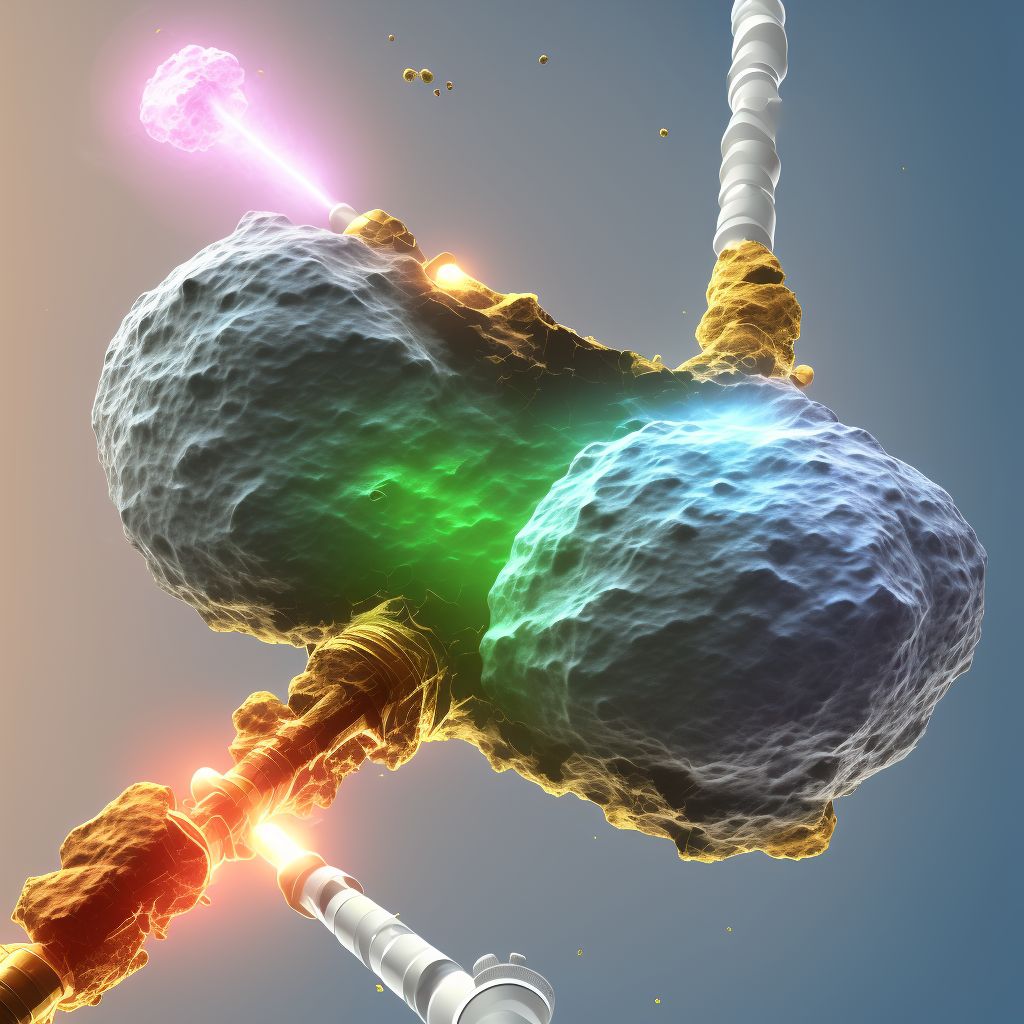
Nondisplaced transverse fracture of shaft of right tibia, subsequent encounter for open fracture type IIIA, IIIB, or IIIC with routine healing Save
ICD-10 code: S82.224F
Disease category: S82.224: Nondisplaced transverse fracture of shaft of right tibia
Nondisplaced Transverse Fracture of Shaft of Right Tibia: Understanding Open Fracture Types IIIA, IIIB, or IIIC with Routine Healing
A nondisplaced transverse fracture of the shaft of the right tibia is a specific type of bone injury that occurs when the tibia, or shinbone, breaks horizontally across its length without any significant displacement. These fractures are commonly encountered and can be further classified based on the severity of the open wound.
Open fractures, also known as compound fractures, are injuries where the broken bone pierces the skin, leaving the fracture exposed to the external environment. In the case of the nondisplaced transverse fracture of the shaft of the right tibia, subsequent encounters may involve open fracture types IIIA, IIIB, or IIIC.
Open fracture type IIIA refers to a wound less than 1 centimeter in size, while type IIIB involves a wound greater than 1 centimeter with extensive soft tissue damage. Type IIIC open fractures are those associated with arterial injuries requiring repair.
During the subsequent encounter, routine healing is the main focus. Routine healing involves the natural process of bone repair, which typically occurs in stages. The initial stage, known as the inflammatory phase, involves blood clot formation and the recruitment of specialized cells to the fracture site. This is followed by the reparative phase, where new bone tissue begins to form. Finally, the remodeling phase takes place, during which the newly formed bone tissue is reshaped and strengthened.
- Non-Surgical Approach: Nondisplaced transverse fractures of the shaft of the right tibia often do not require surgery. Instead, immobilization techniques such as casting or bracing are employed to stabilize the fracture and promote healing.
- Monitoring: Regular check-ups and imaging tests, such as X-rays, may be necessary to monitor the progress of the healing process. These appointments allow healthcare professionals to evaluate the alignment of the fracture and ensure that healing is occurring as expected.
- Weight-Bearing Progression: As the fracture heals, weight-bearing activities can gradually be reintroduced. This progression is typically guided by the healthcare provider to prevent any further damage or complications.
While this article does not cover treatment methods, it is essential to consult with a medical professional for a comprehensive understanding of the appropriate treatment plan for this specific injury. By following the recommended treatment and allowing sufficient time for healing, individuals can expect a successful recovery from a nondisplaced transverse fracture of the shaft of the right tibia.
Treatment of Nondisplaced transverse fracture of shaft of right tibia, subsequent encounter for open fracture type IIIA, IIIB, or IIIC with routine healing:
Treatment Options for Nondisplaced Transverse Fracture of Shaft of Right Tibia
When it comes to a nondisplaced transverse fracture of the shaft of the right tibia, subsequent encounter for open fracture type IIIA, IIIB, or IIIC with routine healing, there are several treatment options available to promote proper healing and restore mobility. Let's explore some of these options:
...To see full information about treatment please Sign up or Log in